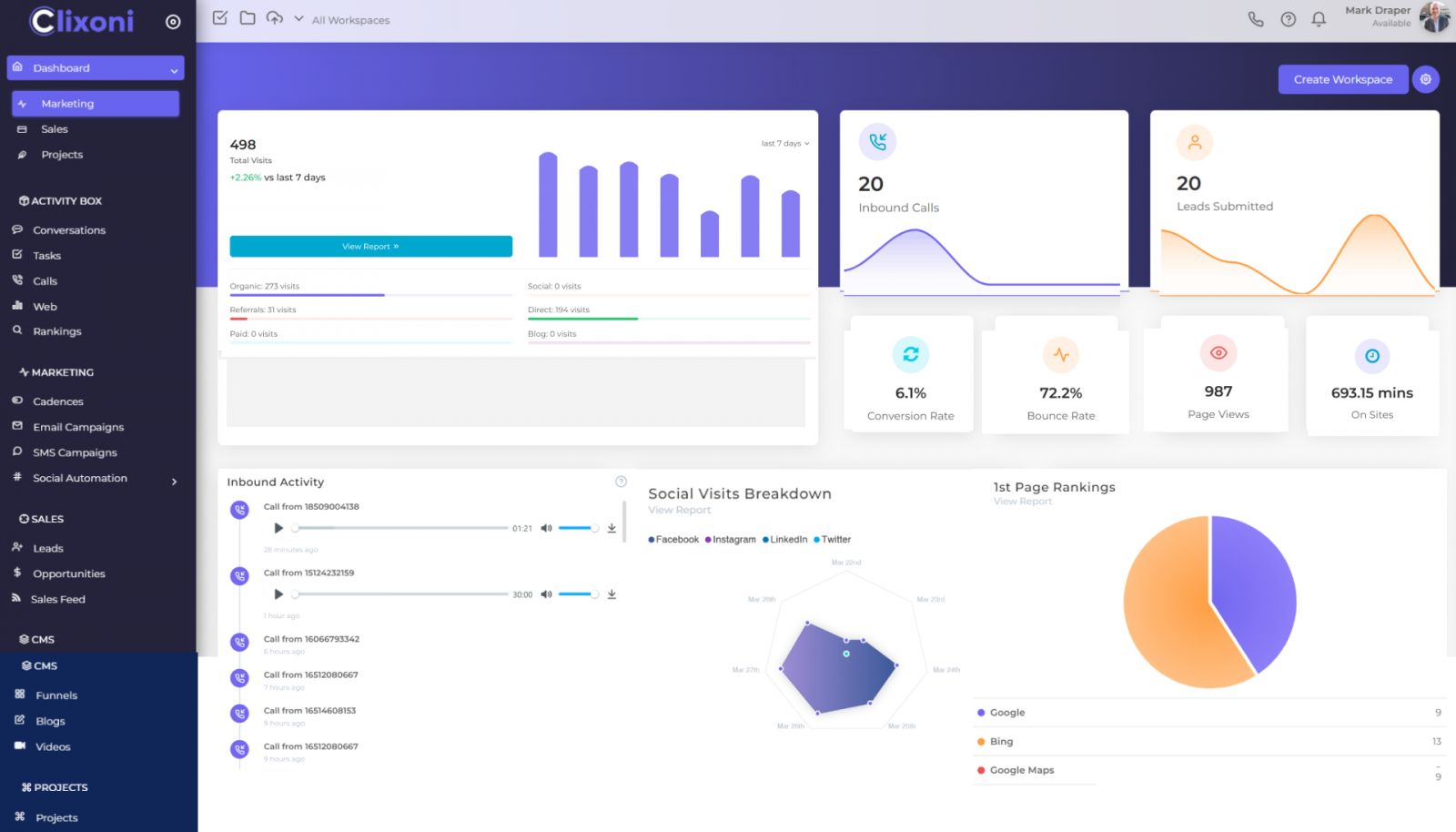5 Essential Features for Small Business Websites
July 22nd, 2024

To create a standout small business website, focus on five essential features. First, display your business information clearly, including hours, contact details, and an engaging "About Us" section. Next, ensure easy navigation with a clean layout and structured menu. Don't forget to make your contact info accessible on every page, enhancing trust and communication. Offer engaging content that resonates with your audience, including blogs and customer testimonials. Finally, implement effective analytics tools to track visitor behavior and hone your marketing strategy. Want to elevate your website even further? There's more valuable insight waiting for you!
Business Information Essentials
When building your small business website, including essential business information is crucial for connecting with your audience and establishing trust.
Start by displaying your business hours prominently in the header or footer. This helps manage customer expectations and reduces frustration. Don't forget to include a clear contact number on every page; it's shocking that 27% of small businesses skip this, diminishing their customer trust.
Ensuring clarity in your business information is part of a strong digital footprint, which can significantly enhance your online presence.
Your "About Us" page is vital too, often being the second-most visited section of your site. It offers a personal connection, showcasing your company's values and mission.
Be sure to create a dedicated products and services page with detailed descriptions and pricing, empowering potential customers to make informed decisions.
Providing both your street address and mailing address adds credibility, while a map showing your location helps customers easily find your physical business.
These business information essentials not only enhance your website design but also create a welcoming environment for your audience.
Navigation Simplicity
Navigating your small business website should feel like a breeze for your visitors. When you prioritize navigation simplicity, you significantly enhance the user experience. In fact, 94% of users believe easy navigation is crucial for a positive interaction with a website. A well-structured menu with clear labels helps your visitors find information quickly, reducing bounce rates by up to 20%.
Utilizing broad headings and categorized subheadings can improve comprehension, making it easier for users to locate specific content. A clean layout, free of clutter, allows website visitors to focus on essential elements, potentially increasing engagement time by 50%.
Don't forget about mobile devices! Over 50% of web traffic comes from mobile users, so ensuring your site's responsive design adapts seamlessly across all screen sizes is vital.
By implementing these essential features, you create an environment where visitors feel at ease and empowered to explore.
In short, focus on clear labels and a clean layout to enhance navigation simplicity. This thoughtful approach not only improves comprehension but also invites visitors to stay longer and engage more deeply with your content.
Accessible Contact Details
Clear navigation sets the stage for a positive user experience, but it's the accessibility of your contact details that can truly make or break customer engagement. As a small business owner, you need to ensure your contact information is easy to find. About 27% of small business websites lack a contact phone number, so prominently displaying yours can significantly enhance accessibility and build trust with potential customers.
Utilizing tools that support effortless client interaction management can further streamline how you communicate with your clients.
Make it a priority to display contact information on every page, ideally at the top, so users can reach out no matter where they're on your site. A professional email address, like SuzieQ@SuziesAccounting.com, reinforces your credibility and encourages inquiries.
Additionally, clearly stating your business hours in both the header and footer helps manage customer expectations and reduces frustration.
Don't forget to include a contact form! This allows potential customers to reach out after hours, ensuring you don't miss any opportunities. By gathering essential information through the form, you can follow up effectively.
Engaging and Relevant Content
In today's fast-paced digital landscape, engaging and relevant content is crucial for capturing your audience's attention and nurturing their interest. To achieve this, leverage industry research and trending topics that resonate with your customers' questions.
Additionally, high-quality content enhances professional image, so regularly updating your blog or resource section not only keeps your website dynamic but also enhances your SEO, driving more website traffic and boosting your brand authority.
Incorporating diverse content formats—like videos, infographics, and interactive elements—caters to varied audience preferences, increasing user engagement. Well-crafted, human-centric content fosters emotional connections with visitors, encouraging them to linger longer and increasing the likelihood of conversions.
Don't underestimate the power of customer testimonials; they build trust and add authenticity to your brand.
Encouraging social media sharing of your engaging content can significantly amplify your brand's visibility, creating a ripple effect that brings in additional traffic.
Effective Analytics Tools
To truly understand how your engaging content resonates with your audience, leveraging effective analytics tools is key. Tools like Google Analytics empower you to track visitor demographics, interests, and behaviors, giving you the insights needed to craft targeted marketing strategies.
Consider focusing on these areas:
- Visitor Demographics: Know who's visiting your site and tailor your content to meet their needs.
- Engagement Metrics: Analyze new vs. returning visitors to adjust your content strategy and improve retention.
- Device Performance: Identify usability issues across devices to enhance user experience.
By monitoring content popularity, you can refine your strategy based on which pages attract the most website traffic.

Regularly reviewing analytics data helps you continuously improve website features and user engagement. This proactive approach can transform casual visitors into loyal customers, creating a community around your brand.
Ultimately, effective analytics tools aren't just about numbers; they're about understanding your audience and enhancing their journey on your site.
Embrace these insights to liberate your business potential and grow your online presence.
Final Thoughts
In the bustling digital marketplace, your small business website is your storefront. By prioritizing essential features like clear business information, easy navigation, and engaging content, you'll draw customers in and keep them coming back. Don't forget accessible contact details and effective analytics tools to ensure you're always one step ahead. With these elements in place, your website can transform from a simple page into a powerful tool that drives success and growth for your business.